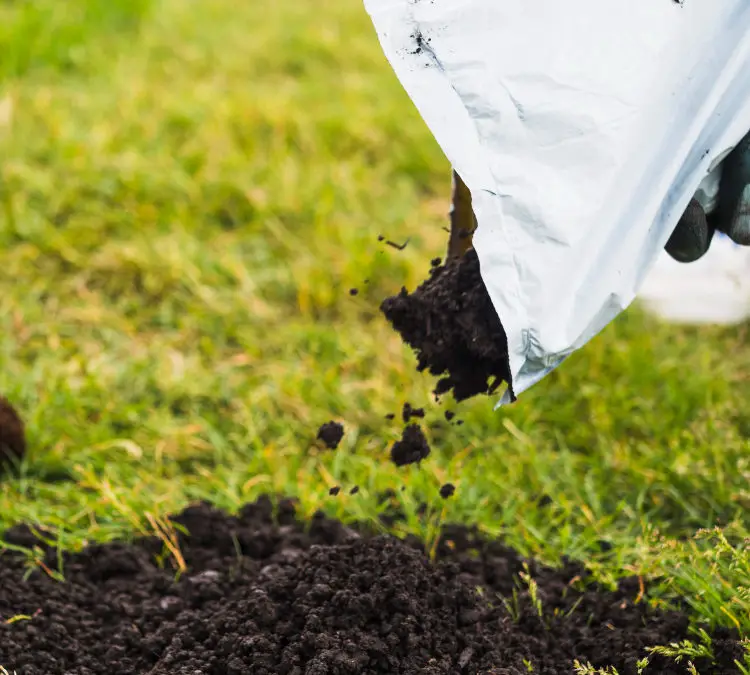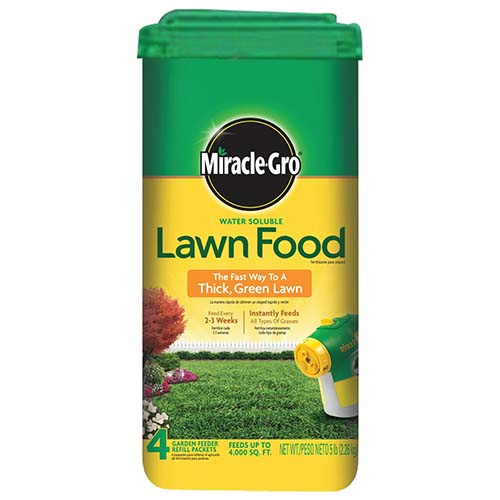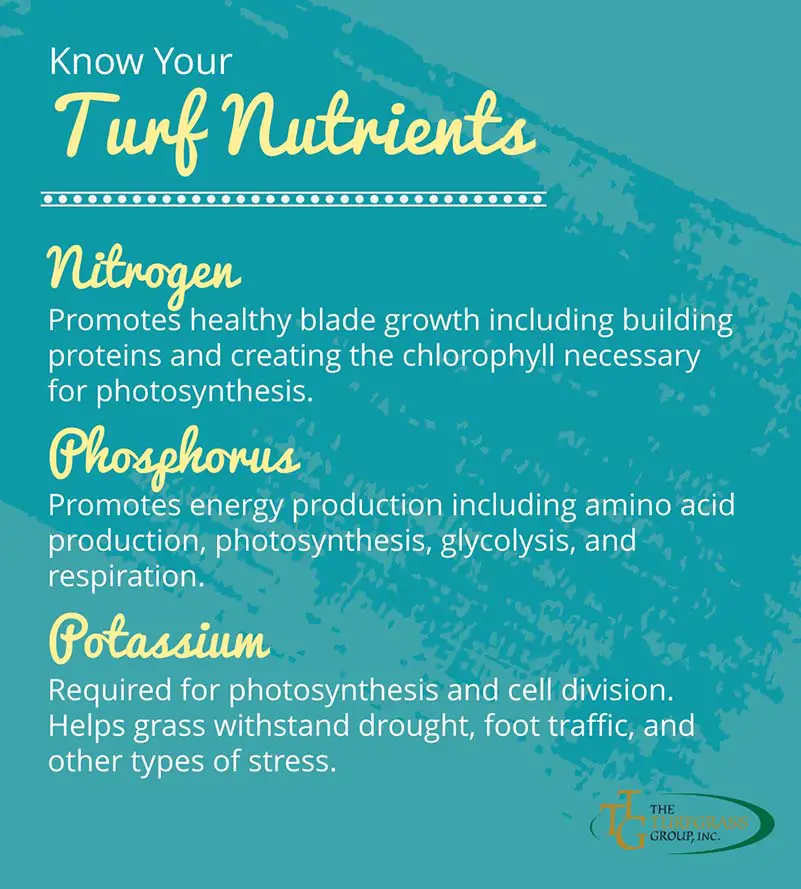What Is The Suitable Time Of Overseeding On Your Lawn
After preparing the areas of the lawn by mowing and raking, it is the right time to do the needful steps accordingly.
- Mow the lawn shorter than usual.
- Eliminate all the clippings from the lawn so that the lawn can get sunlight and water.
- Use a rake to loosen the soil of the lawn, so that seeds can well contact with soil, and have a chance to increase the development of seeds.
- Choose your seeds.
- Check the overseeding rate of the grass seeds.
- Use a spreader and spread seeds around the lawn according to the instruction given on the label.
- Spread seeds with a logical process like do it when air is quiet and avoid the windy day.
- Be ensured to distribute seeds equally.
What Makes Up Fertilizer
Most commercial fertilizers have 3 ingredients nitrogen, phosphorus and potassium. Some companies add trace amounts of other important nutrients such as zinc, magnesium, calcium, sulfur, or iron and some formulations will contain only one of the primary nutrients.
Generally, a large portion of bagged fertilizers is made up of filler. This prevents the chemicals from scorching the grass, and this is why most liquid fertilizers which are more concentrated should be mixed with water before or during application.
There are also a variety of special lawn fertilizers:
- Winterizing fertilizers are typically high in potassium, and although theyre usually advertised for fall application, they can be applied in spring as well because potassium is used all year by grasses, and is involved in heat and cold tolerance, disease resistance, and other stress tolerances.
- Some weed and feed products contain a broadleaf weed killer for weeds such as dandelions and are used in fall applications
- Others contain a preemergence herbicide to control crabgrass when applied in the spring
- Lawn starter products are typically high in phosphorus and are intended for newly seeded lawns or fresh-laid sod.
Do I Fertilize My Lawn Before Or After Rain
Ideally, you should aim to fertilize about two days after rain or watering, and when the next heavy rainfall is at least two days away. It can be helpful to have some rain before and after fertilizing. Rain a couple of days before fertilizing keeps your yard moist and the turf healthy, receptive to the nutrients.
Also Check: How To Get Rid Of Ant Infestation In Lawn
How To Fertilize Your Lawn In The Fall
Approach your fall fertilizer application just as you would any other. Follow the coverage recommendation for the chosen product. Its always a good idea to split the application in half and then make two passes in different directions. For example: if your fall fertilizer bag says it will cover 5,000 square feet, find the setting on your spreader for 10,000 square feet . This will close the spreader gate allowing only one-half the recommended rate to flow through. Then make two consecutive passes at this spreader setting. This will apply the total recommended amount using two passes instead of one. This ensures even, uniform coverage, reducing the risk of missing parts of your lawn.
After youve finished your fall fertilizer application, make sure you thoroughly wash your spreader. This removes any remaining fertilizer residue that can corrode spreader components over the winter. Refer to your owners manual for additional recommended maintenance before winter storage.
Will Lawn Feed Make My Grass Grow

There are 16 nutrients that grass need for optimal health. Lawn feed usually contains ample concentrations to help support grass growth. Common commercial lawn feed is rich in sulfur, calcium, phosphorus, magnesium, nitrogen, and potassium. Using lawn feed will help your grass to grow, but it is important not to double up on lawn feed and fertilizer. Doing so may over enrich the soil which can actually have a negative effect on the health of your grass. Lawn feed is most effective when your grass just needs a small boost to help it grow as opposed to a regular schedule of balanced nutrition.
Weed and feed products are also an effective way to help your grass grow and banish weeds at the same time. The formula contains grass healthy nutrients in addition to pre-emergent herbicides. This type of lawn feed will kill existing weeds in your grass, prevent the growth of new weeds, and support healthy grass growth all at the same time. Always take the condition of your grass into account before using an all-in-one product. Lawns that dont have weeds should never have a pre-emergent herbicide applied.
Don’t Miss: How Much Does It Cost To Have Your Lawn Treated
How Long Should I Water After Fertilizing
24 hoursWhen to Water a Lawn After Fertilizing? At Master Lawn, we typically say to wait 24 hours before watering your lawn after fertilizing But it is important to make sure that it does receive a good watering session soon after that 24 hour waiting period.
Fertilizers can last in the soil anywhere from seven days to several months The exact amount of time that fertilizer lasts in soil will vary depending on the type of fertilizer you have and the formulation of the fertilizer What is this? Some fertilizers are also made to target specific plants.
When To Fertilize Warm
When to fertilize depends on what kind of grass you have. You want to time fertilizing so it occurs just before grass enters its peak growing phase. If you live in southern areas where lawns feature warm-season grasses, fertilize turf in late spring or early summer, just before grass kicks into high gear. Make a second application in late summer. If your warm-season lawn goes dormant in winter, don’t fertilize after the first of September.
Warm season grass types include bahia, Bermuda, St. Augustine, centipede and zoysia. Warm season grasses typically thrive in frost-free areas and grow best at temps of 75 degrees to 90 degrees.
You May Like: How To Destroy Ant Hills In Your Lawn
How N P And K Are Mixed
If you look closely at most store-brand lawn fertilizers, they look like little pebbles of different colors. That’s because the N, P, and K are all separate. So, when you spread the product on the lawn, you don’t get an even distribution. Most Scotts® Lawn Food products have Scotts® All-In-One Particles®, which means your lawn gets an even distribution of nutrients every time you apply it
How Often Should You Change Fertilizer
Soluble fertilizers, for instance, are applied every two weeks during the growing season Granular fertilizers are generally applied about every six to eight weeks Slow-release fertilizers work for months, so one application is generally all that is needed for a growing season.
Early morning is the best time of day to fertilize your lawn Fresh morning dew provides just enough moisture for your grass to absorb the fertilizer.
Recommended Reading: How To Treat Brown Patch In Lawns
Which Fertilizer Should I Use
Not all fertilizers are created equal, and choosing the right one for your lawn is key. To determine what fertilizer you want to use, first you need to know what specific type of grass you have. Most common varieties of grass found in the U.S. fall into two categoriescool season grass and warm-season grass.
The main ingredient in fertilizer is nitrogen, which fuels the grass from the root and allows it to grow. Once nitrogen-rich fertilizer is administered, it shifts the grass from establishing and maintaining strong roots to revving up new growth above soil in the form of shoots. Because nitrogen also supports the production of chlorophyll in your grass selecting a quality fertilizer is important for this reason as well.
In addition to nitrogen, your lawn grass also needs phosphorus to support root health and potassium to regulate grass chemistry, so be sure to consult an expert once youve determined the specific type of grass you have to make sure you are selecting the right one for your lawns needs.
When Is The Best Time To Aerate My Lawn
Aeration is good for lawns but can stress them if timed improperly. For cool-season grasses common in northern lawns, early fall or early spring are the best times for aerating. For warm-season grasses common to southern lawns, the best time for aerating is late spring or very early summer.
When to plug a lawn with core aerator?
The best time to dethatch, for both warm- and cool-season grasses, is when the turf is growing late spring or early fall. You can aerate a lawn by hand or with a machine. Core aerators extract small plugs of grass and soil, about 1/2 inch wide, and leave them on the lawn.
What does it mean to aerate and fertilize your lawn?
Aerating and fertilizing is that twice-a-year deep clean to ensure your lawn stays in tip-top shape. Aeration is a lawn treatment that pulls out cores or small plugs of grass and topsoil to create a small hole. With this hole, lawns can absorb more nutrients and water, and roots have more oxygen and room to grow.
Also Check: Do My Own Lawn Weed Control
How Often You Should Apply Fertilizer To Your Lawn
Though fertilizer has its benefits, you dont want to overdo it. A full feeding is recommended at least 5-6 times per year. You want to feed your lawn when its growing most rapidly. However, you should base the frequency on your climate and the type of grass you have. For example, cool season grasses can be fertilized in late spring, but only if necessary.
Warm season grasses, like Bermuda grass, St. Augustine, zoysia, centipede and buffalo grass, should be fertilized in spring. Depending on the amount of water your grass gets, aim to reapply your fertilizer every 6-8 weeks. Keep a watchful eye on your grass. If it looks thick and green, you can probably skip the feeding. If its starting to look brown or black, give your lawn some TLC.
Late Summer To Late Fall

Between August and November, grass slows down and prepares for the winter months. At the same time, broadleaf weeds start active growth again. With Pennington UltraGreen Winterizer Plus Weed & Feed Fertilizer 22-0-14, you can feed your northern or southern lawn nutrients essential to its winter prep and spring green-up and kill broadleaf weeds. As a general rule, allow six to eight weeks between fertilizing and your first expected frost.
As with all fertilizer products, check the label and follow instructions for your specific grass type. If you’re overseeding, wait until next year for weed & feed. Instead, turn to Pennington UltraGreen Lawn Fertilizer 30-0-4 for the year’s final feeding.
Always sweep excess fertilizer off sidewalks and patios to avoid runoff.
You May Like: How To Get Rid Of Weeds In Lawn Pet Friendly
Safety While Using Lawn Fertilizer
Most lawn fertilizers are not concentrated enough to cause instant harm, but you still want to make sure you handle them safely and correctly. Be sure you read all directions on both your spreader and the fertilizer bag before beginning. This will ensure you know how to correctly operate the spreader and will let you know if your fertilizer needs to be mixed with anything. Once youve covered your lawn, sweep off fertilizer granules from hard surfaces like sidewalks or roadways to prevent runoff when watering.
When And How To Fertilize Lawns
Your lawn reaps the greatest fertilizer benefits when you follow best practices for your type of lawn grass and the task at hand. Starter fertilizers should be used only for starting new seed, plugs or sod. Crabgrass preventers go on in early spring before crabgrass seed germinates. Weed & feed fertilizers do their work after weeds emerge from soil and weeds and grass are actively growing.
Fertilize established lawns during their most active growth periods, when they need extra nutrients the most. On the cool-season grass calendar, for grasses such as Kentucky bluegrass and tall fescue, that’s early spring and early fall. For the warm-season lawn calendar and grasses such as Bermuda and Zoysia, that’s every four to eight weeks during active summer growth. All lawns benefit from a final late-summer or early fall fertilizer at least six weeks before your expected first frost. This final feeding helps grasses prepare for winter.\
With all fertilizer products, read the label carefully and follow instructions closely. With proper application, you help ensure you get the most from your investment of product and labor. You also protect the safety of pets, children and adults and avoid lawn damage from preventable mishaps, such as fertilizer burn.
Proper fertilizer handling helps keep lawns safe for kids and pets.
Pennington with design is a registered trademark of Pennington Seed, Inc.
UltraGreen is a registered trademark of Central Garden & Pet Company.
Read Also: How To Thicken Up Your Lawn
How Often Should Fertilizer Be Applied
Depending on the amount of water your grass gets, aim to reapply your fertilizer every 6-8 weeks Keep a watchful eye on your grass If it looks thick and green, you can probably skip the feeding.
Water-soluble fertilizers are often useful as a quick boost for vegetables Liquids or crystals mixed with water are applied as frequently as once a week The nutrients, easily distributed by a gardener with a sprinkling can, are readily available to plants.
How Do I Know What Spreader To Use
The first is the type of fertilizer you will be using. Spreaders are designed to distribute dry, granular materials, so if you are using a liquid fertilizer, you will need a different type of spreading attachment.
The second is the size of your lawn. If you have a large lawn, you will need a spreader that can cover a lot of ground quickly. Smaller lawns can be serviced with a spreader that has a smaller capacity.
The third factor is the terrain of your lawn. If you have a lot of hills and uneven ground, you will need a spreader that can distribute the fertilizer evenly without dumping it all in one spot.
Read Also: What Does Gypsum Do For Your Lawn
Not All Lawn Fertilizers Are The Same
If you’ve shopped for lawn fertilizer before, you might have noticed some numbers on the label that look something like this: 32-0-4. Its easy to ignore, but dontthis code says a lot. The numbers stand for nitrogen, phosphorus, and potassium , and they tell you the percentage of those ingredients in the product by weight.
Heres how those letters and numbers add up for the look of your lawn.
Tips For Watering Your Lawn The Right Way13 Photos
Learn the ins and outs of lawn irrigation, including expert tips for efficient watering.
A day or two before applying fertilizer, water your lawn thoroughly. After grass dries, apply fertilizer. Then lightly water again. This second watering is vitally important, because it washes fertilizer off grass blades and into soil. You can also time fertilizer application between rainfalls to let rain wash fertilizer into soil. Just be sure you don’t fertilize before a downpour, or you may wind up with fertilizer washing away, especially if your lawn slopes. Avoid applying fertilizer during a drought when a lawn has browned or withered from lack of moisture.
You May Like: How To Naturally Fertilize Your Lawn
Your Lawn Needs Fertilizer As Much As Sunshine And Water
Grass needs the correct amount of grass needs the correct amount of water and sunshine to be healthy and green, but dont forget to feed it, too! Your lawn needs nutrients to thrive and survive. For soil to be as rich as possible, it needs 3 key elements:
Think of this as the trinity for your lawn. If you dont have even one of these, your lawn will look shriveled and brown. You feed your body, but your lawn needs food as well.
Understanding Fertilizer Numbers To Grow A Healthier Lawn

You know its time to fertilize your lawn, so you head to the store. As you walk through the fertilizer aisle, you notice three numbers on the front of each product. The first reads 23-3-8. The second one is marked with 30-0-4. Bags three and four also sport a series of three digits. You arent sure what these numbers mean or which seasonal blend your lawn needs to reach its maximum beauty.
Understanding these numbers, buying the right amount of fertilizer, and applying it properly throughout the year will empower you to grow the lawn of your dreams. To get started, heres what youll need to know.
You May Like: What Are The Best Battery Powered Lawn Mowers
Are There Drawbacks To Using Fertilizers
Its clear that fertilizers provide a host of benefits to our plants in fact, its thought that as much as 30% 50% of our crop yields are a direct result of these additives but are there any reasons to exercise caution with fertilizers? There must be some negatives, right?
The largest drawbacks are typically caused by inexperience for example, if a fertilizer is used incorrectly or at a higher consistency than recommended, it can cause damage to the plant, similar to a chemical burn. And while most established plants typically recover well from this type of mistake, younger, more fragile ones may not.
Some inexperienced gardeners might also think that adding fertilizer will take care of all their plants needs. But just like humans and other animals, plants also need a balanced diet as well as a number of other elements to be able to grow to the best of their ability. Well-maintained soil that contains worms and insects is essential as it maintains the moisture and oxygen levels around the roots and produces organic matter to help enrich the growing medium.
As with all additives, when it comes to fertilizers, less is often more and its all about getting the right balance for your plant.